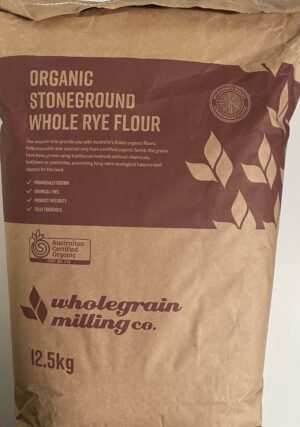Understanding the science of sourdough fermentation is more than just a culinary pursuit; it’s a fascinating journey into microbiology and chemistry that unveils the complexities behind one of the oldest forms of breadmaking.
This intricate process transforms simple ingredients—flour and water—into a flavorsome and nutritious loaf of bread. The magic lies in the microbial ecosystem, where yeast and bacteria work in harmony.
Delving into this process not only enriches our baking skills but also deepens our appreciation for this artisanal craft.
Sourdough Oven Spring: The Secret to Perfect Bread.
Table of Content
The Microbial World in Sourdough
The science of sourdough fermentation begins with the symbiotic relationship between wild yeast and lactic acid bacteria (LAB).
These microorganisms are naturally present in flour and the environment. When flour mixes with water, these microbes activate, initiating the fermentation process.
The yeast consumes sugars in the flour, producing carbon dioxide and alcohol as by-products. This causes the dough to rise and develop complex flavors. LAB, meanwhile, produces lactic and acetic acids, contributing to the sourdough’s distinctive tangy taste.
The balance and variety of these microbes influence the bread’s flavor, texture, and nutritional profile.
Chemistry of Flavor Development
At the heart of the science of sourdough fermentation is the chemistry of flavor development.
During fermentation, enzymes in the flour break down starches into simpler sugars, which are then consumed by yeast and LAB.
This not only produces the gases that leaven the bread but also leads to the formation of various compounds responsible for flavor and aroma. These include organic acids, alcohols, esters, and other volatile compounds.
The longer the fermentation, the more complex and nuanced the flavor profile of the sourdough becomes. This chemical ballet is what differentiates sourdough from other types of bread.
Health Benefits and Nutritional Aspects
Exploring the science of sourdough fermentation also reveals its health benefits and nutritional aspects. Sourdough fermentation can make bread more digestible and nutritious.
The LAB in sourdough can partially break down gluten, potentially making it more tolerable for people with gluten sensitivities (though not for those with celiac disease). Furthermore, the fermentation process reduces the bread’s glycemic index, which can be beneficial for blood sugar control.
The acids produced during fermentation also help in preserving the bread and can increase the availability of certain nutrients, such as minerals, by breaking down phytates that otherwise inhibit their absorption.
The science of sourdough fermentation is a remarkable blend of microbiology, chemistry, and gastronomy.
It not only elevates the simple act of breadmaking into an artisanal craft but also enhances the nutritional value and digestibility of the bread.
This deeper understanding enriches our appreciation of sourdough and encourages a more mindful approach to this timeless culinary tradition.






